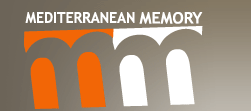Note
Notre Dame des Fontaines in la Brigue |

|
Collection title
12-13 Côte d'azurID
INA00069Source
INA (FR)First broadcast date
11/07/1989Production year
1989Abstract
Reporting on the beautiful chapel called Notre Dame des Fontaines in the territory of the village of La Brigue, in the Upper Roya valley. Built in the fourteenth century, the chapel is particularly remarkable for the frescoes that cover the entire wall, work attributed to the painters Jean Baleison and Jean Canavesio at the end of the fifteenth century. Testimony of Jean-Louis Fontana, cultural attaché, who recalled that this valley allowed trade with Piedmont and Liguria, of the pastor of La Brigue, who pointed out the anachronisms of some representations of the Passion and of Jean-Pierre Brenda, mayor of the village.Type
videoProduction companies
- France 3 Nice - Own production
Broadcaster
FTV - F3Audiovisual form
MagazinePersonalities
- Fontana Jean-Louis
- Brenda Jean-Pierre
Primary theme
PaintingSecondary themes
- Tourism and cultural sites / Architecture
Credits / Cast
- Molinengo Jean Marie - Journalist
Period of events
- From 1000 to 1500
Map locations
- France - South East - La Brigue
Original language
FrenchMedia running time
7m13
Context
Similar content by :
Theme (37)

Collection (5)

Date (126)


Djillali Gharbaoui : ...
Djillali Gharbaoui : 30 years later…
SOREAD-2M (MA)
05/30/2001 - 8m57sFrench


Chaibia Talal
Chaibia Talal
SOREAD-2M (MA)
01/04/1999 - 16m33sFrench

Alain Capouilliet,a p...
Alain Capouilliet,a painter who loves Morocco.
SOREAD-2M (MA)
01/26/2009 - 24m23sFrench

Alexandria Spectrums ...
Alexandria Spectrums exhibition
Bibliotheca Alexandrina (EG)
07/15/2006 - 5m3sEnglish
page 1 of 10


View 1 - 4 of 37







